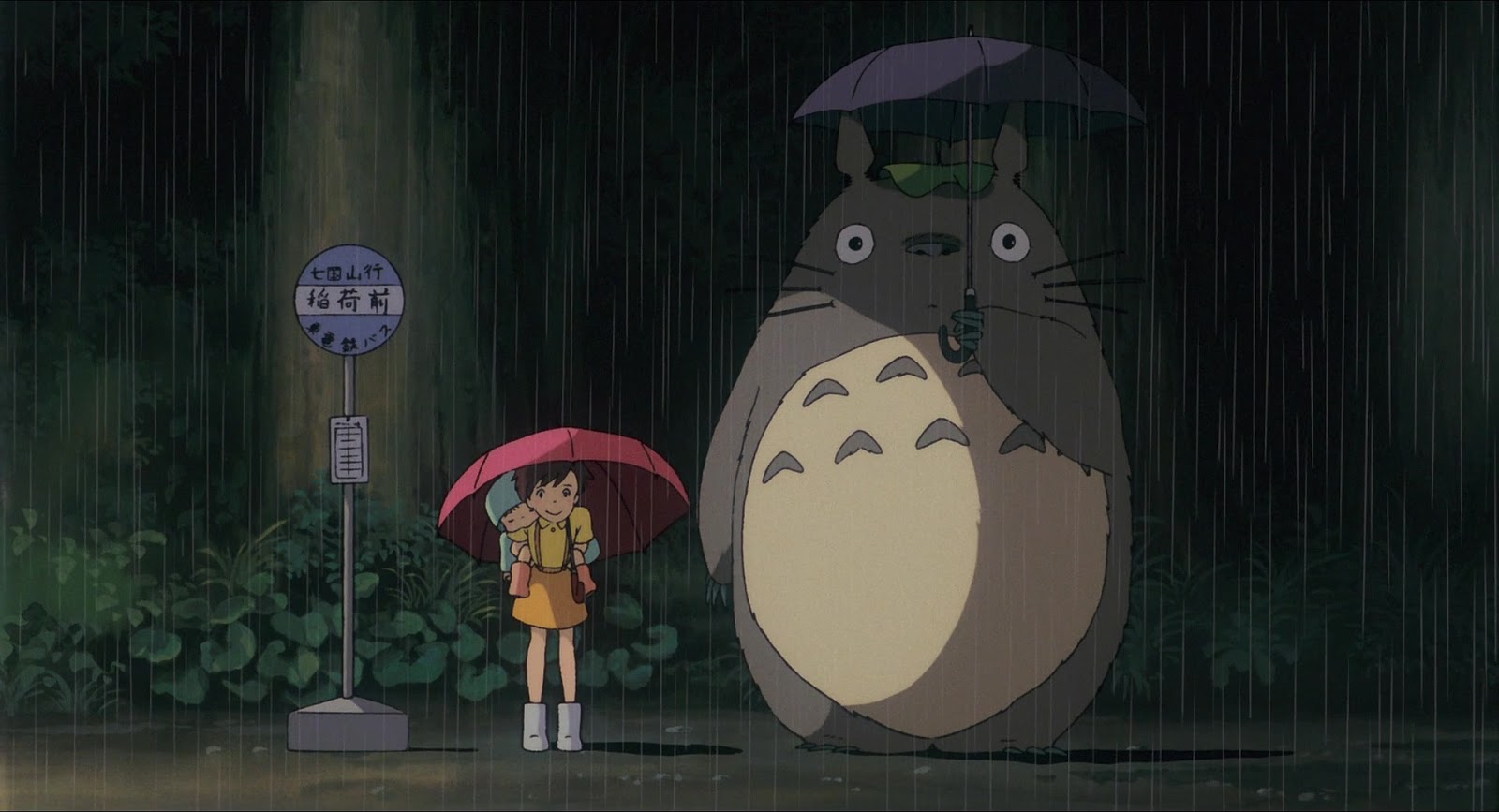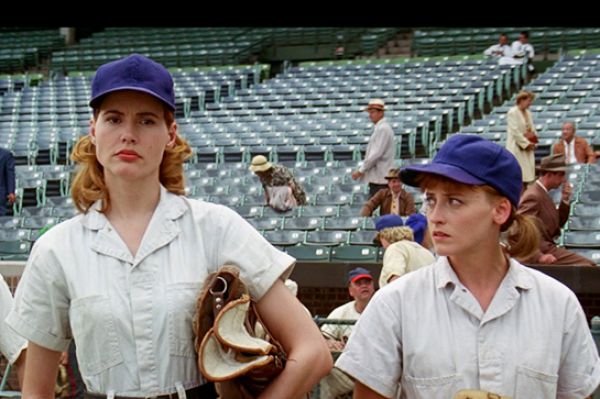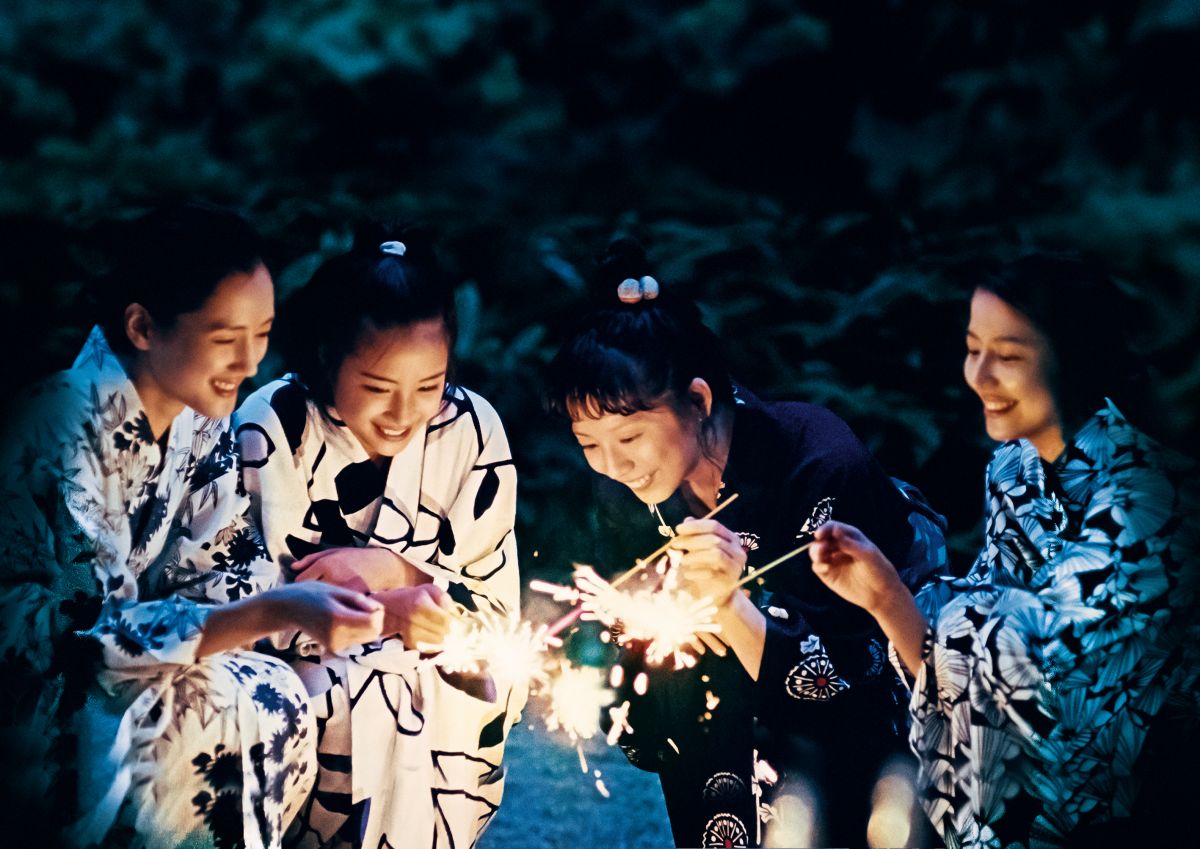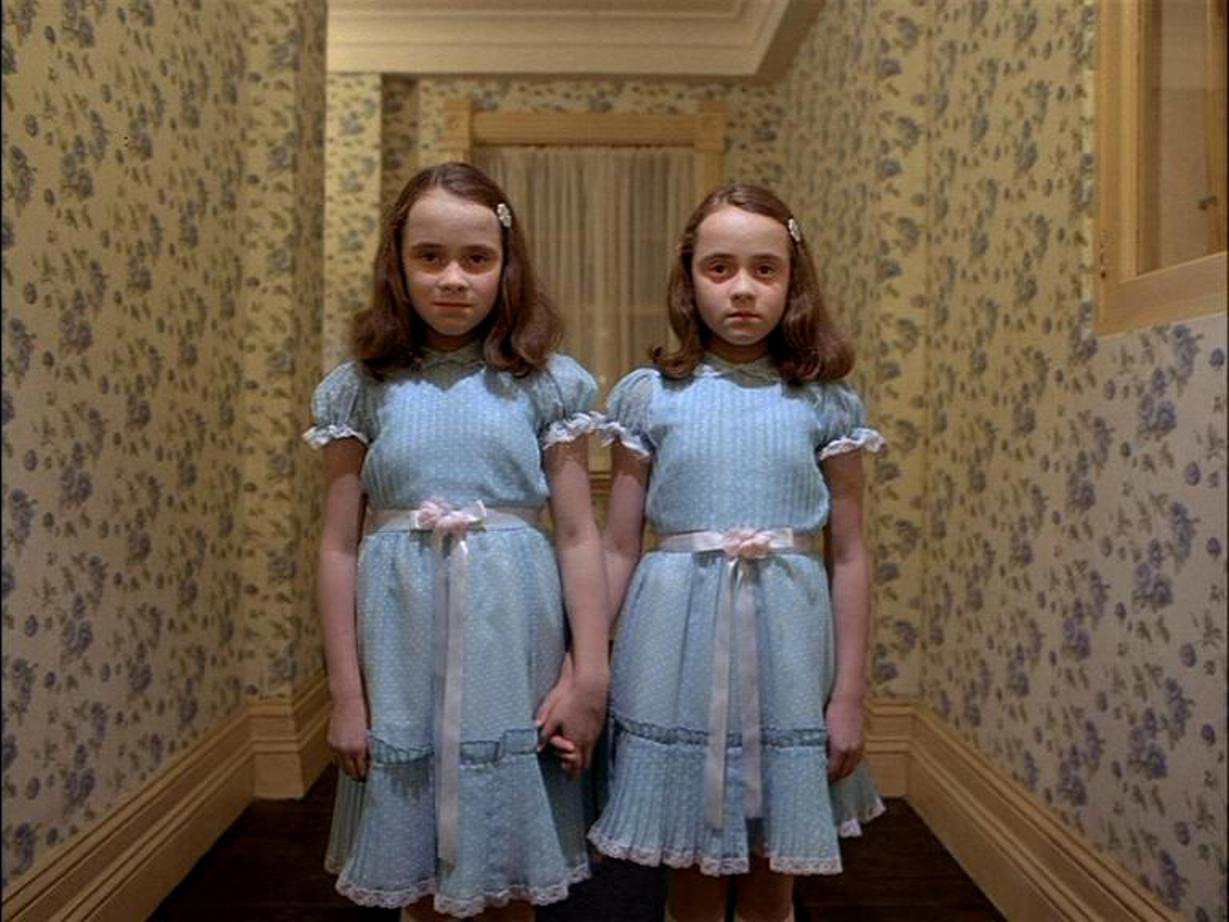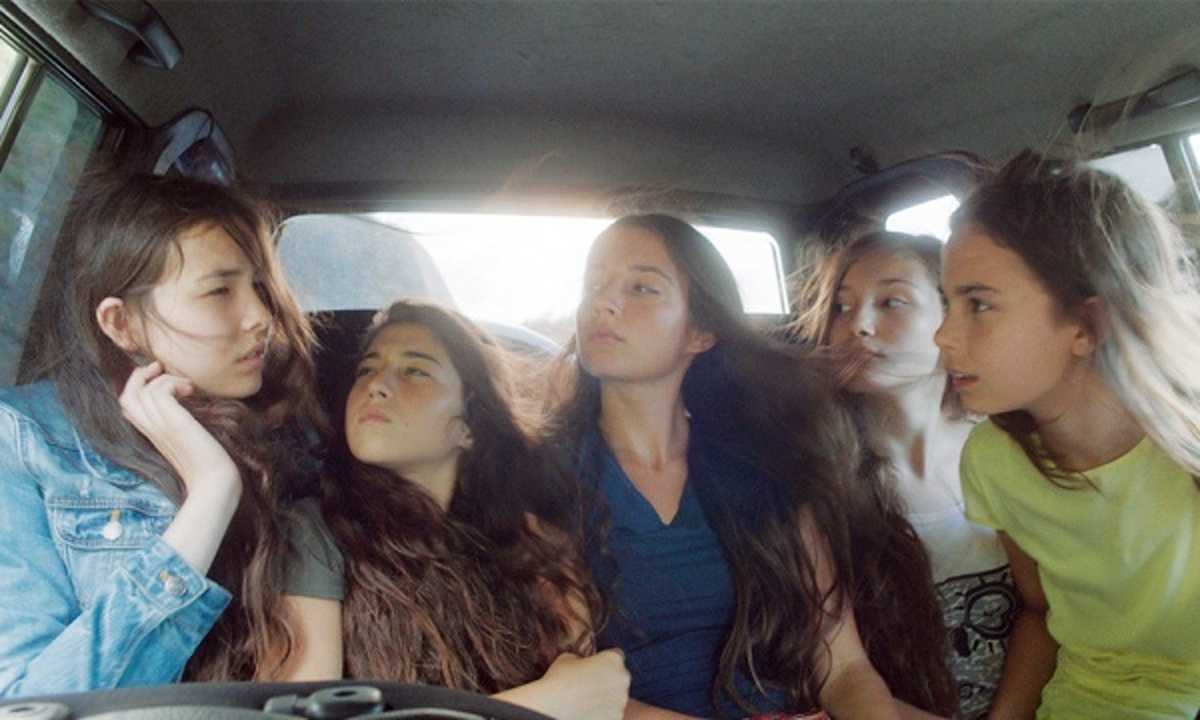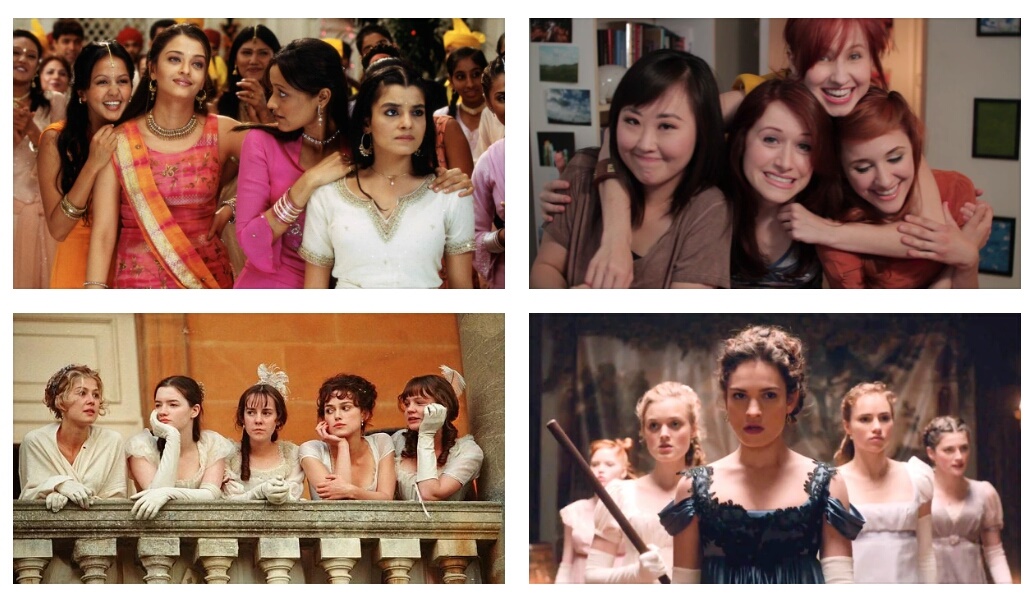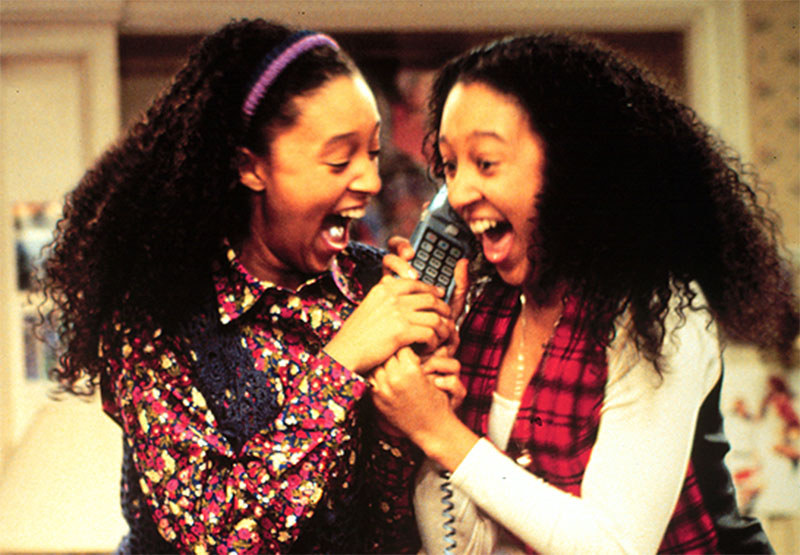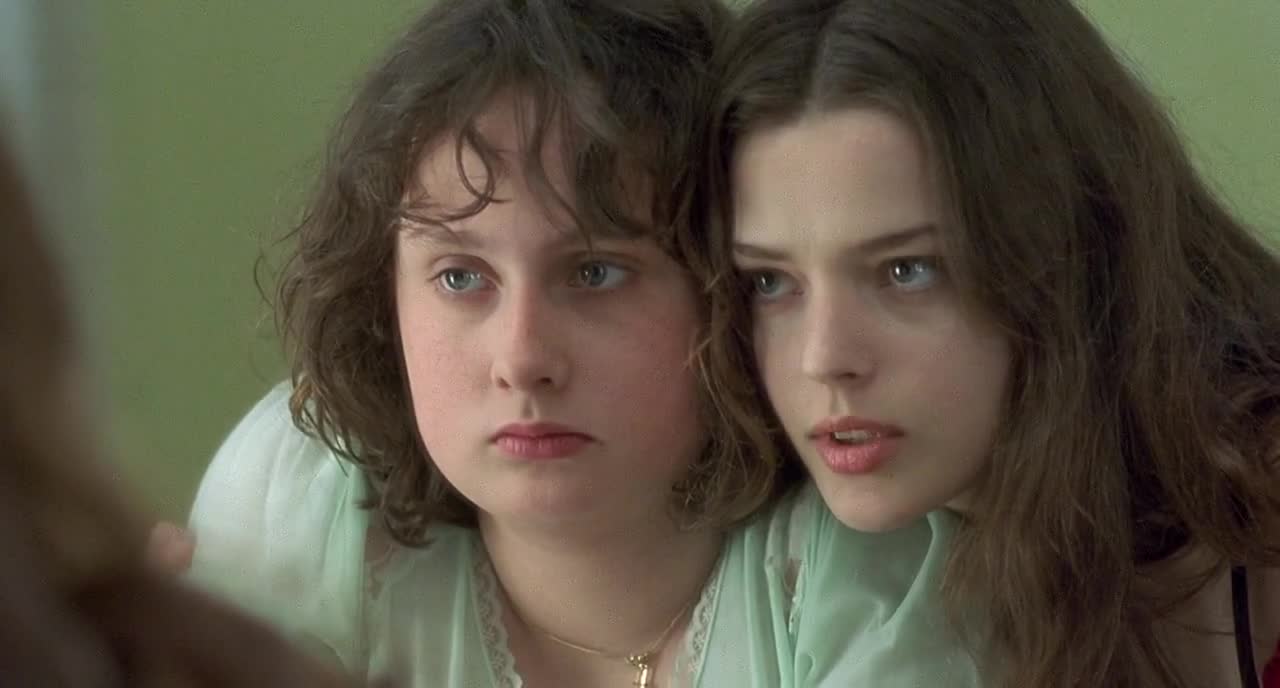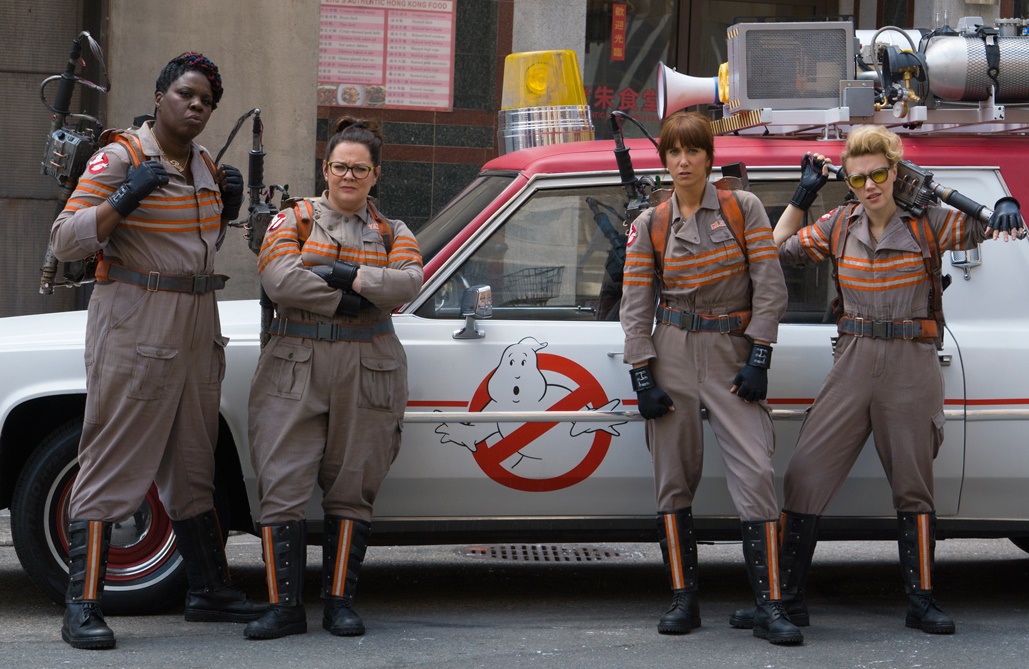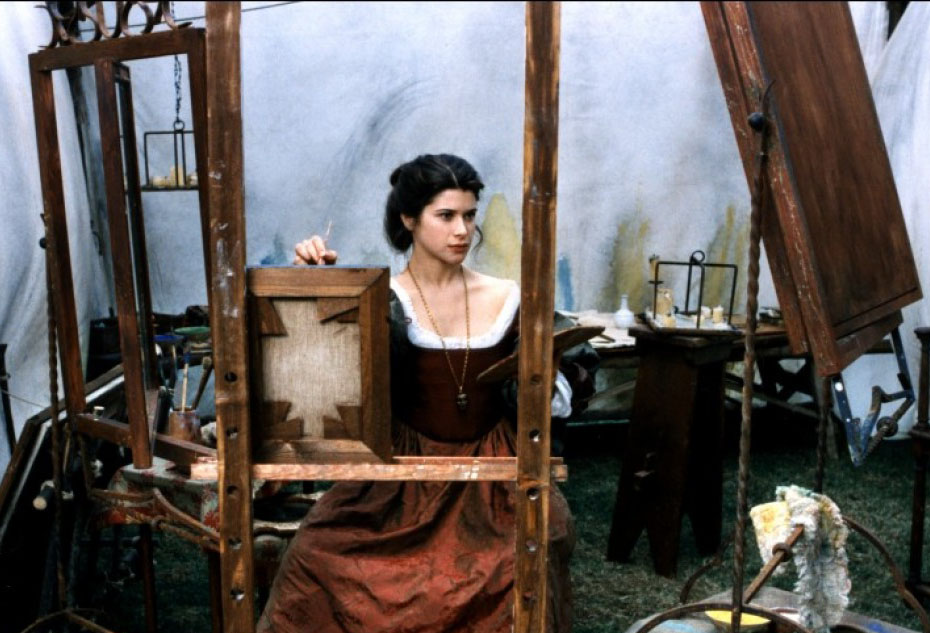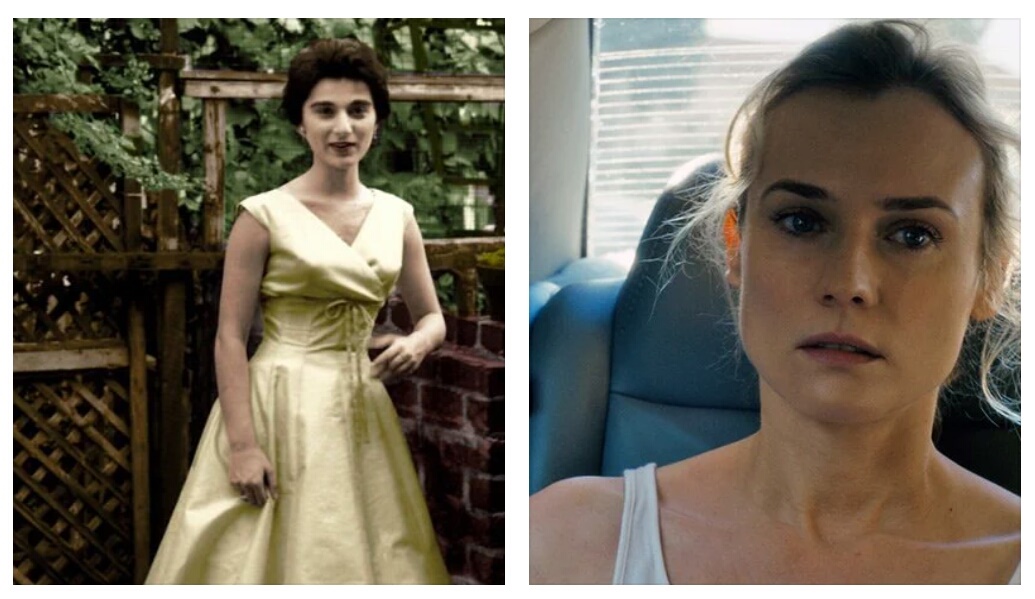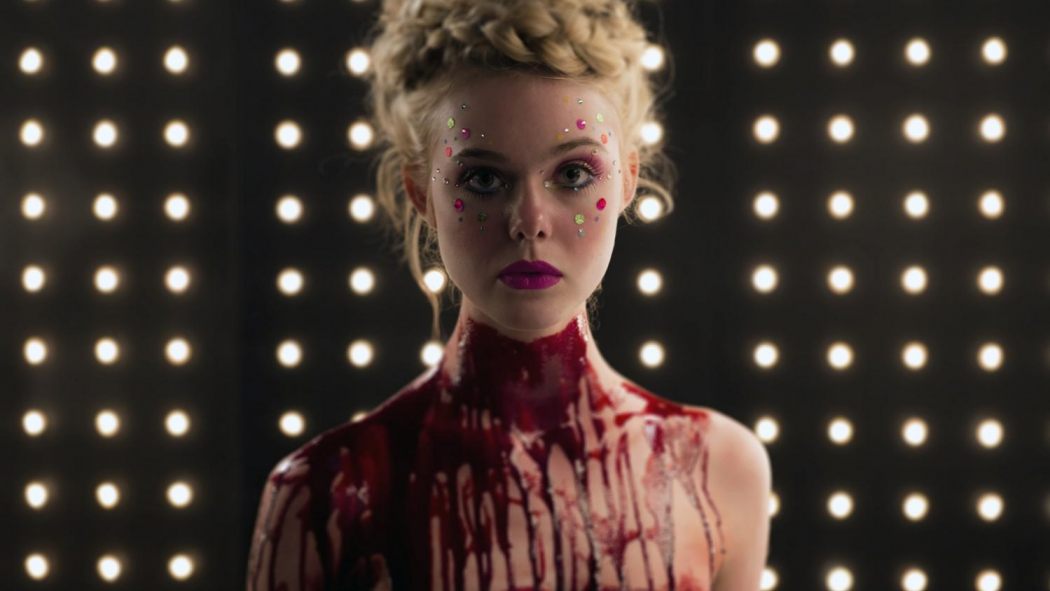This guest post written by Clara Mae appears as part of our theme week on Sisterhood. | Spoilers ahead.
Anybody who has a sister knows that sisterhood is the source of both endless support and frustration, of happiness and anger and sorrow. Sisters often have a turbulent relationship with each other, and a sister’s opinion can lift us up or just as easily shatter us. When there’s a large age gap between the sisters, the relationship becomes even more complicated, as the older sister often takes on the role of third parent — or second, or even first — to the younger sibling, while still playing the role of confidant and best friend. Suffice to say, the bond of sisterhood is a complex one, and it’s one that’s thoroughly explored in Hayao Miyazaki’s 1988 animated film My Neighbor Totoro.
My Neighbor Totoro focuses on two sisters, ten-year-old Satsuki and four-year-old Mei Kusakabe, who befriend a giant furry forest spirit in 1950s Japan. The sisters and their father move to an old rundown house in the countryside to be closer to their mom, convalescing in a nearby hospital. (The novelization of Totoro confirms that the mom is suffering from tuberculosis.) The film opens with the girls sharing candies and playing as young siblings often do, with the younger sister clearly emulating the older one. They laugh and explore their new home together, with Mei repeatedly mimicking the body language of Satsuki and echoing her words: “Wow, it’s creepy.” “CREEPY!” “A camphor tree.” “CAMPHOR TREE!” “Hey dad, acorns are falling from the ceiling.” “FALLING FROM THE CEILING!”
While the two clearly make wonderful playmates — with Satsuki especially showing a tremendous degree of patience and love for her rambunctious sibling — the film also goes to great lengths to show how much slack Satsuki picks up because of her mother’s absence and her father’s inattentiveness (which is not malicious but rather stems from him working as a university professor). At ten years old, Satsuki wakes up early to make everyone breakfast and box lunches. Halfway through her preparation, her father wanders in, sleep-tousled, and admits he forgot about doing that. Satsuki puts Mei’s hair into her signature pigtails every day, and she rebukes Mei that she can never sit still. When Satsuki starts school, Mei runs off, falls down a hole, and meets Totoro for the first time. Her father never even notices she’s gone, and he only realizes something is amiss when Satsuki comes home and immediately asks for Mei. “You and I are a lot alike,” their mother says tellingly to Satsuki. One can only wonder the trouble that Mei would get into if Satsuki wasn’t there to be a stand-in guardian.
We also see the ways in which Mei accepts Satsuki as a surrogate parent, despite Satsuki being barely into her tweens. When Satsuki leaves Mei with their neighbor Granny in order to go to school, Mei throws a fit. But it’s Satsuki, not her father, that Mei drags Granny to: “She said she wouldn’t stop crying unless I brought her to you,” Granny tells Satsuki. Mei then runs to Satsuki and buries her face in her skirt. Satsuki ends up negotiating with the teacher to let Mei stay with her, a mimicry of what a young mom would likely have to do with a daughter. Later, when the two walk home together and Mei falls, Satsuki immediately picks her up and wipes her face. “I didn’t even cry. That’s good huh,” Mei asks her sister, again seeking approval as a child would with her parent. As for their real parents, it’s implied that they never learn about this episode.
The film shows how Satsuki struggles with this dual role of acting as the most present parent while still being only a child herself. On one hand, Satsuki is able to see spirits like Totoro and the soot sprites as well as Mei — something that Granny notes only children are able to do. On the other hand, everyone expects Satsuki to act more mature, which clearly starts to wear on her as the film goes on. When Mei throws a tantrum because their mom is too sick to come home for the weekend, Satsuki explodes at Mei, “You want her to die, is that it? You’re such a baby. Just grow up.” She then runs off, leaving Mei sobbing. It’s implied that Mei then runs away after seeing Satsuki breaking down to Granny; the illusion of Satsuki as her mother breaks, and she runs toward the comfort of her real mother.
In the end, Satsuki is still just Mei’s sibling. While Satsuki fulfills the role of mom to Mei, it’s her status as sister and child that ends up saving the day. When Mei runs away, all the adults in the village try in vain to find her. Despite her best efforts, Satsuki is unable to find her either. It isn’t until Satsuki calls on Totoro — the creature she wouldn’t even be able to see if not for her youth — that she’s finally able to find her. The film ends with the siblings reunited and laughing together in the catbus, their status as sisters, rather than mother and child, reaffirmed.
My Neighbor Totoro is one of Miyazaki’s best odes to sisterhood, portraying both the struggles but also the benefits of having a sibling at your side. Compare Satsuki to characters like Chihiro in Spirited Away or Kiki in Kiki’s Delivery Service — both an only child who spend their respective films struggling to just take care of themselves, and who are lost and miserable until they find sisterhood and support in older female characters like Lin, Ursula, and Osono. Chihiro especially is the same age as Satsuki, yet it’s difficult to imagine the sullen and moody Chihiro — at least at the beginning of her film — patiently taking care of a younger child like Mei. Similarly we can look at how Satsuki and Mei often function as a supportive unit in their film (with most of their scenes framed to include both siblings), versus in Howl’s Moving Castle, where Sophie’s sister is ultimately absent from the film and when Sophie needs help the most.
Perhaps Miyazaki’s strongest message about the strength of sisterhood can be found in the fact that Satsuki and Mei were first conceived as a single character. Seen in original cover photos, My Neighbor Totoro was originally going to focus on just one six-year-old girl. Before production started, Miyazaki decided to split that one character into two, and thus we got one older and one younger sister. This duality carried over into their names: “Satsuki” is an old Japanese term for the month of May, and “Mei” is the way the Japanese would pronounce the English word May. And maybe that’s what sisterhood is: having both a sidekick and mirror of who you really are.
See also at Bitch Flicks: Magical Girlhoods in the Films of Studio Ghibli
Clara Mae is a twenty-something English major grad from UC Berkeley. Works somewhere in the San Francisco financial district. If not at work, is probably off eating ramen, petting dogs, or attempting yoga. Blogs too little at https://claramae.contently.com/ and tweets too much @ubeempress.
